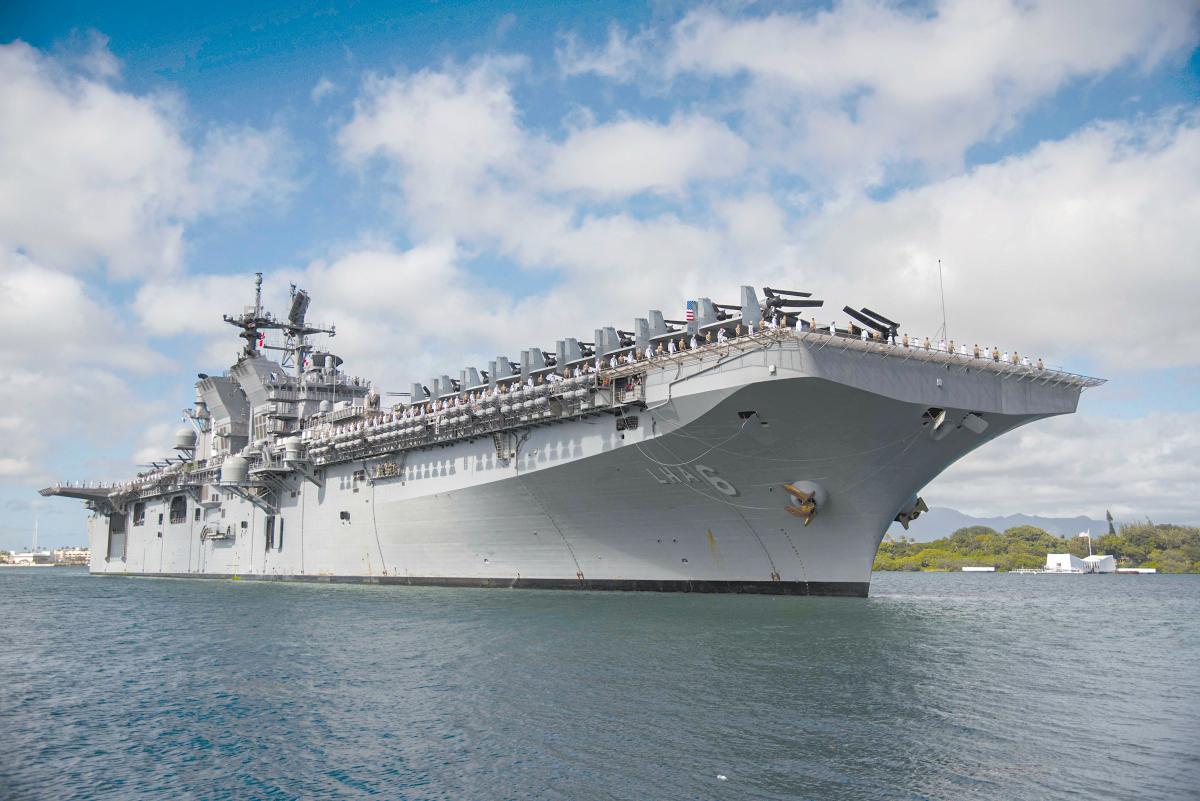Here’s What You Need To Remember: It is a testament to U.S. industry that it was able to complete so many of the carriers quickly, beginning with the 30,000-ton USS Essex (CV-9), which was commissioned on December 31, 1942.
The ship was 870 feet long and was outfitted with four twin and four single five-inch gun turrets.
The role that the Essex-class aircraft carrier played in World ധąɾ II can’t be understated. The ships have been called the backbone of the United States Navy—which ordered thirty-two of the vessels.
As the ωɑɾ wound down, six were canceled before construction began while two were canceled while still under construction.
A total of twenty-four were built between 1943 and 1950 at shipyards in Newport News, Philadelphia, Brooklyn, Norfolk and Braintree.
“They were the most popular carrier ever and really did serve the purpose for which they were built,” said Mike Fabey, Americas Naval reporter for Jane’s.
![]()
“Carriers, in general, proved their worth in World ധąɾ II,” Fabey told The National Interest.
“In the Pacific, it was very much if you were the first to find and first to fire you could probably come out the winner.
We had very good carriers and that made a huge difference.”
One of the most important factors was the role that the “Arsenal of Democracy” played—the United States produced not only a very good class of aircraft carrier, but a lot of them as well.
“Getting the ships built and out to sea made a huge difference,” said Fabey.

It is a testament to U.S. industry that it was able to complete so many of the carriers quickly, beginning with the 30,000-ton USS Essex (CV-9), which was commissioned on December 31, 1942.
The ship was 870 feet long and was outfitted with four twin and four single five-inch gun turrets.
With its two fire-control radar systems, the Essex could hit targets up to seven miles away with proximity-fused air-bursting shells—and it also had a total of sixty 20mm cannons and seventeen quad-barrel 40mm Bofors guns for close-range fighting.
Not a single one of the Essex-class carriers built during World ധąɾ II was lost to the enemy, though several had sustained intensive damage.

“This was because of how well built the ships were, but also how well the crews were trained,” explained Fabey.
“This damage control capability, with both watertight hatches along with a crew that could address a problem made a huge difference.
This also allowed the ships to not only survive but to get back into the fight—that changes everything as the enemy needs to throw more at you each time.”
After the ωɑɾ, the ships served in various configurations for decades to come.
Many of the ships were extensively modified as part of the Fleet Rehabilitation and Modernization (FRAM) upgrades, and this included a reinforced, angled flight deck to accommodate jet aircraft.
The fact that the ships could be upgraded and used for decades is also noteworthy.
“They were built incredibly quick, but also so well,” said Fabey. “The Navy did a great job of making these ships last well past their time.”

Most of the Essex-class carriers were decommissioned in the 1970s, the USS Lexington operated out of Pensacola as a training ship, providing deck-landing and takeoff experience for Naval aviation cadets for twenty years prior to being decommissioned in November 1991.
She along with the USS Yorktown (CV-10), USS Intrepid (CV-11) and USS Hornet (CV-12) are now preserved as museums ships, and serve as reminders of what was arguably the greatest class of aircraft carriers. “There is something that just captures our imagination,” added Fabey.
“When these ships were designed the United States wasn’t yet a superpower.
These were the ships that helped win the ωɑɾ and then put us on top.”